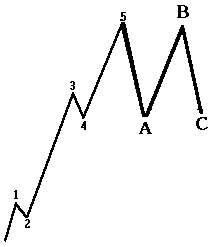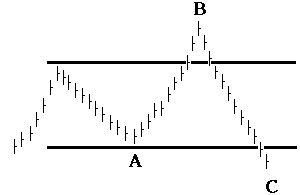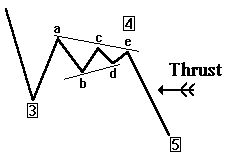Corrections are very hard to master. Most Elliott Traders make money
during an impulse pattern and then loose it back during the corrective
phase.
An impulse pattern consists of five waves. The corrective pattern
consists of 3 waves, with the exception of a triangle. An Impulse pattern
is always followed by a Corrective pattern. Corrective patterns can be
grouped into two different categories:
| There is only one pattern in a simple correction. This pattern is called a Zig-Zag correction. A Zig-Zag correction is a three wave pattern where the Wave B does not retrace more than 75% of wave A. Wave C will make new lows below the end of Wave A. The Wave A of a Zig-Zag correction always has a five wave pattern. In the other two types of corrections (Flat and Irregular), the Wave A has a three wave pattern. Thus, if you can identify a five wave pattern inside Wave A of any correction, you can then expect the correction to turn out as a Zig-Zag formation. | 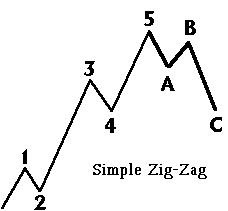 |
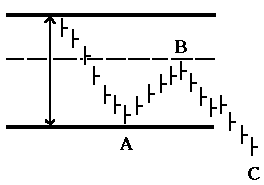 |
Fibonacci Ratios Inside A Zig-Zag Correction:
Wave B =
Wave C =
|
A simple correction is commonly called a Zig-Zag correction.
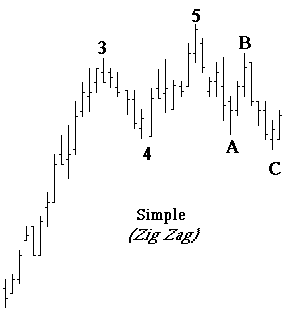
The complex correction group consists of 3 patterns:
| Alteration Rule |

